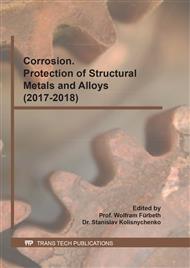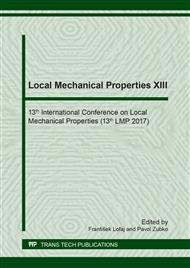p.103
p.108
p.114
p.120
p.127
p.135
p.141
p.147
p.153
Mechanical Properties of HVOF Sprayed CrC-NiCr Coating Exposed to Hot Corrosion Environment
Abstract:
Current development in power generation industry leads to search of new technologies and ways how to protect surface against aggressive corrosion environment. Suitable method leading to enhancement of surface properties is application of protective coatings on surface. This approach allows to use components composed from less quality materials. The current development in steam turbines leads to increasing operating temperatures for the purpose to enhance performance. This process results in elevation of operating temperature reaching the potential limits of commonly used materials. One of the key areas of protection in such environment is protection against hot temperature corrosion. Possible solution can be found in application of coatings based on alloys and cermets prepared by HVOF (High Velocity Oxygen Fuel) technology. This paper examines local mechanical and microstructural properties of Cr3C2-25%NiCr coating after exposition to extremely severe hot corrosion environment. Furthermore, the nanoindentation measurements of this coating were performed before and after the corrosion test. The test environment composition was based on mixture of salts 59% Na2SO4 with 34.5% KCl and 6.5% NaCl. Test temperature was 525°C and 575°C. Duration of the exposition to hot corrosion environment was 168 hours in autoclave. The results confirmed that the coating matrix is deteriorated during the exposition to such aggressive environment. The deterioration is localized at surface of coating and is characterized by creation of oxide layer which decreases the speed further speed of matrix dissolution and stabilizes the coating.
Info:
Periodical:
Pages:
141-146
Citation:
Online since:
October 2018
Authors:
Keywords:
Price:
Сopyright:
© 2018 Trans Tech Publications Ltd. All Rights Reserved
Share:
Citation:



